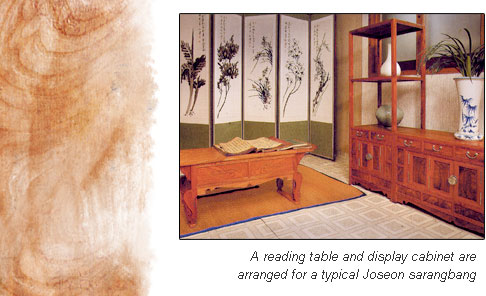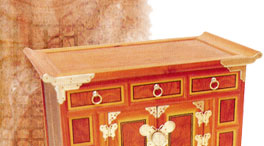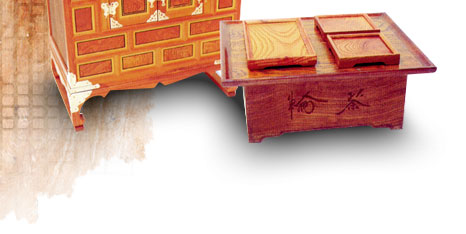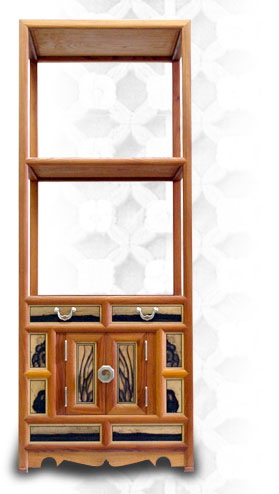| The grain of wood, in trees several hundred years old, contains meditations and songs that it has obtained from its close relationships with sunlight, earth, wind and rain. A tree that has grown tall by absorbing water and nutrients during its long lifetime, and by having deep conversations with the sun and the wind, possesses within it the mystery of the earth drawn from its roots, as well as the numerous stories of sunlight, moonlight and insects extracted from its leaves. A tree is destined to fall, but its thoughts and feelings survive for eternity within the grain.** The beauty of Korean traditional antique furniture lies in the grain of the wood from which it is made. For most Somokjang, or Master Carpenter specialized in making this type of furnishings, no artificial beauty can exceed the loveliness of what is natural. Thus, Somokjang place the highest value on revealing the natural beauty of the wood throughout the entire process of creating a work. They prefer highlighting the material’s natural patterns and forms, rather than adding artificial ornaments or colors. They shun metal nails because these ‘alien’ objects can damage the wood's beauty borne from the landscape, and instead, fit the parts of the work together by making grooves and holes. The result of such meticulous methods is a fine piece of furniture, in which the dynamic, elegant lines and forms of nature are kept intact. Korean furniture unlike other oriental antique furniture possesses its creator’s revered love of nature, interwoven with its refined grace. Because of its wonderful charm, Korean traditional antique furniture is often compared with white porcelain of the Joseon Dynasty (1392-1910). The furnishings' quest for natural beauty within the patterns of the grain, and the white porcelain's search for unpretentious delight within the purity of earth, can be regarded as the two greatest symbols of traditional Korean crafts. This wooden furniture is highly praised even today, not only for its demure embodiment of nature's delicateness, but also the fine, delightful beauty of proportion created by the simple lines and symmetrical division of its facing panels, its practicality resulting from its solid form perfectly crafted with finely carved joints, and its versatility that makes it well suited to any home's interior design. Because of these unique qualities, Korea's traditional furniture has been collected by many connoisseurs in North America and Europe. Although these furnishings are widely loved by overseas collectors, they are, unfortunately, often thought to be Chinese. View the master's works |
||||||||||
|



















